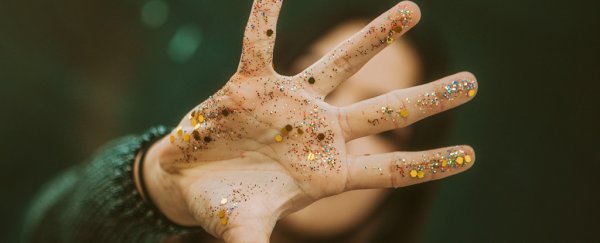They contaminate the air we breathe, tea we sip, water we drink, and food we eat. They're strewn across the deepest ocean trenches and the highest mountains. They're in fish, insects, whales, corals, and our own poo. They're even showing up in human placentas.
Microplastics are everywhere. But we still have no idea what, if anything, they're doing to us.
In light of this staggering accumulation of plastic particles in all environments on Earth, as well as concerning signs from animal toxicology studies, ecotoxicologists are calling for urgent investigations into the effects of microplastics on human health. This echoes calls from the World Health Organisation (WHO) back in 2019.
Commenting on the WHO report, University of Auckland chemist Duncan McGillivray explained there's no need to panic about the effects of microplastic, "but we should not relax either – there are too many unknowns about how microplastics impact health."
Now, in their Perspective article for the journal Science, Dick Vethaak from Vrije Universiteit Amsterdam and Juliette Legler from Utrecht University in the Netherlands warn that given the scale of microplastic pollution, ingestion and inhalation of these particles has the potential to become another human health crisis.
They outlined how much we still don't know about what these microscopic synthetic substances do to our physiology.
While there doesn't appear to be any immediate and severe toxicity (us and every living thing around us has been exposed to microplastics for years now), it's the potential harm from small but incremental effects, long-term exposures, or increasing concentrations that remain troublingly unknown.
While larger microplastics seem to be eliminated from our bodies in the same manner as food waste (we poop them out), it's the smaller stuff that has the greater potential for toxicity, the researchers explain.
"Studies using smaller particles are more likely to detect an effect," University of Toronto ecologists Kennedy Bucci and Chelsea Rochman wrote for The Conversation about their 2020 review on microplastics.
"This may be because smaller particles are more easily consumed by small organisms, or because they can move across the cell membrane and cause harmful effects such as inflammation."
Part of the problem is that we don't yet have the technology to easily isolate, sample, and detect smaller microparticles (less than 10 micrometres in size) and nanoparticles (less than one micrometre in size), Vethaak and Legler explain. So we don't yet even understand our full exposure levels to these synthetic substances.
"Whether there are dose-dependent effects of microplastics in humans also remains unknown," the researchers wrote.
But "studies with human cells in culture, and in rodents and aquatic species indicate translocation of microplastics
It's not just their size that is problematic when it comes to getting answers. Vethaak and Legler caution that the few studies on tissue exposure are probably inaccurate, because they involved testing new microplastics in laboratory conditions.
A recent review concluded there is a risk microplastics could degrade and behave differently inside our bodies compared with external environments. The researchers cited studies describing how macrophages (our garbage disposal cells) more readily scooped up environmentally degraded, rather than pristine, plastic microparticles.
Such studies on human cell cultures and in rodents have, however, revealed some toxicity – including inflammation, cell damage, immune reactions, neurological and metabolic effects – at very high exposures. Plastic and textile industry workers who have been exposed to large amounts of plastic dust have also suffered similar conditions, including inflammation and allergies.
But we can't rule out the effects weren't from other chemicals having hitched a ride on these particles: Microplastics are adept at smuggling other hazards along for their travels. These may include bacteria with antibiotic resistance, viruses, and other toxic molecules. They may also interfere with our own microbiome.
Other plastic-related chemicals known to be toxic, like fire retardants and phthalates, have been detected in animal tissues, but we're not sure of their effects either.
What's more, different types of plastics could impact us radically differently. In their 2019 review, Bucci and colleagues found two different types of plastics having the exact opposite effect to each other in different studies. Polystyrene exposure caused crustaceans to produce more offspring, but polyethylene exposure led to fewer offspring.
This is a tangled mess of factors and interactions that requires a lot more attention thrown at it. Meanwhile, everyone – from industries and governments to consumers – can help by focusing on how to reduce our flood of microplastics into the environment. One of the biggest producers of these microparticles is the fashion industry, with its production of synthetic clothing.
"Multidisciplinary research efforts, involving scientists from environmental and medical sectors as well as polymer scientists, are needed to tackle this potential health hazard," Vethaak and Legler conclude.
You can read their full perspective piece in Science.
